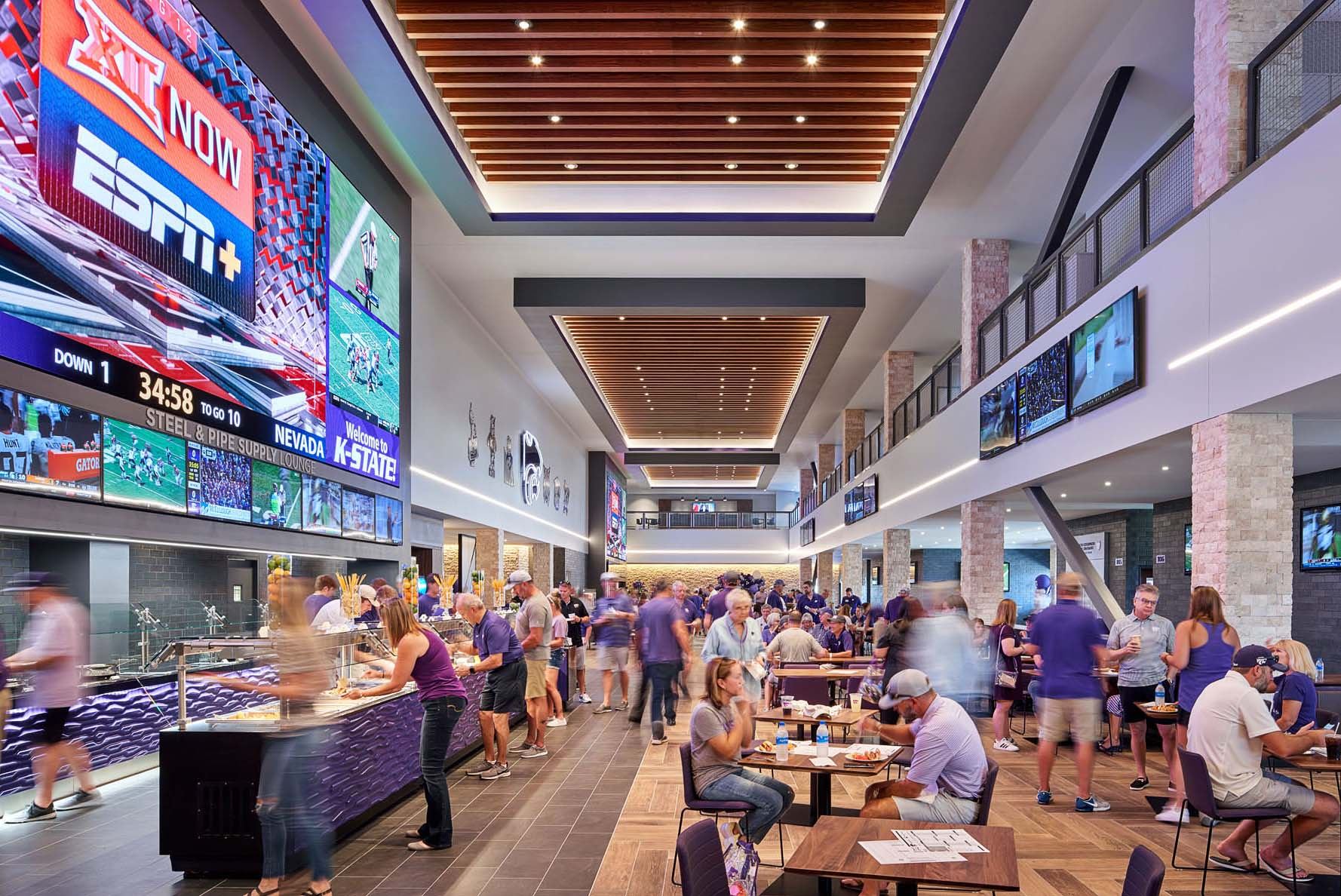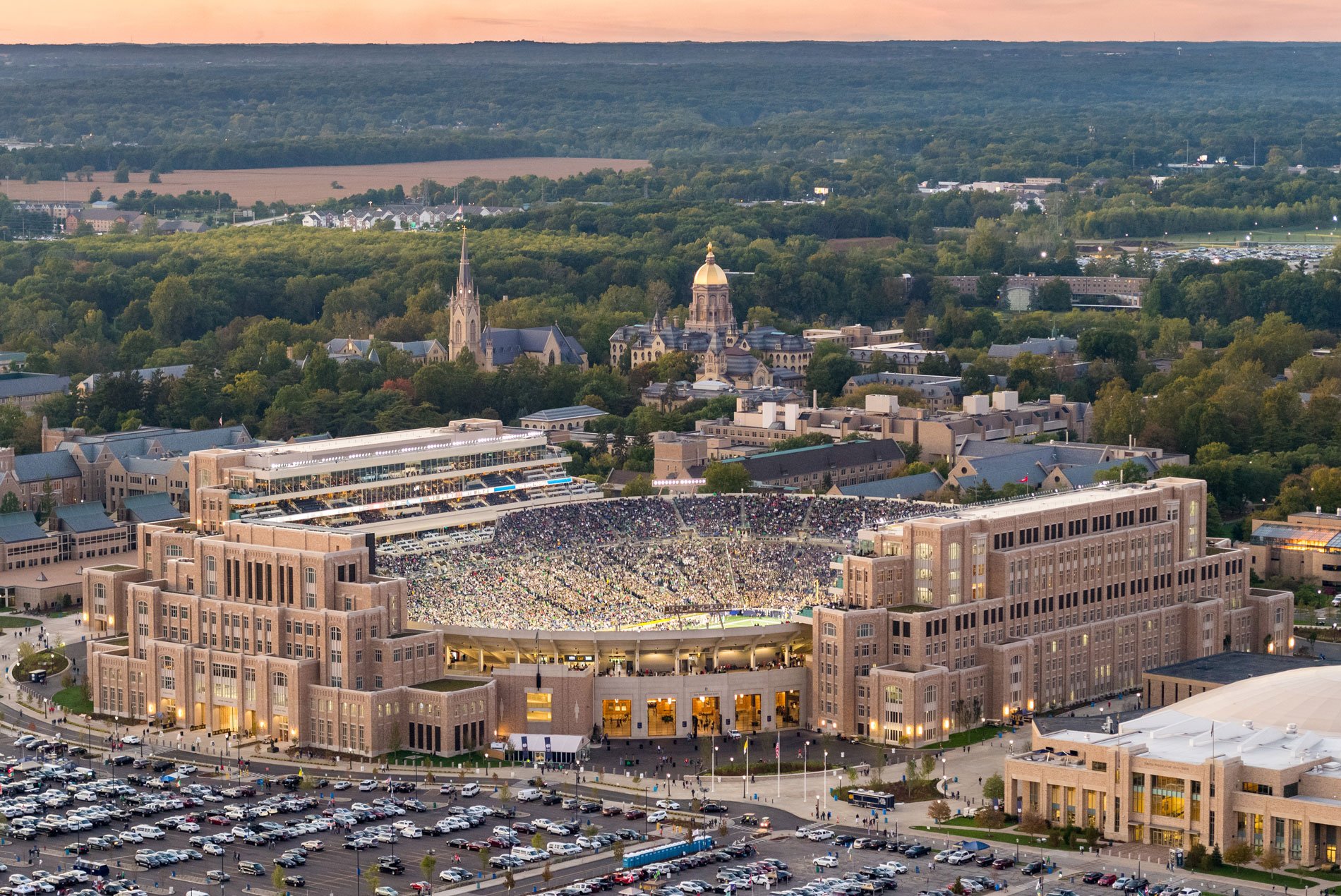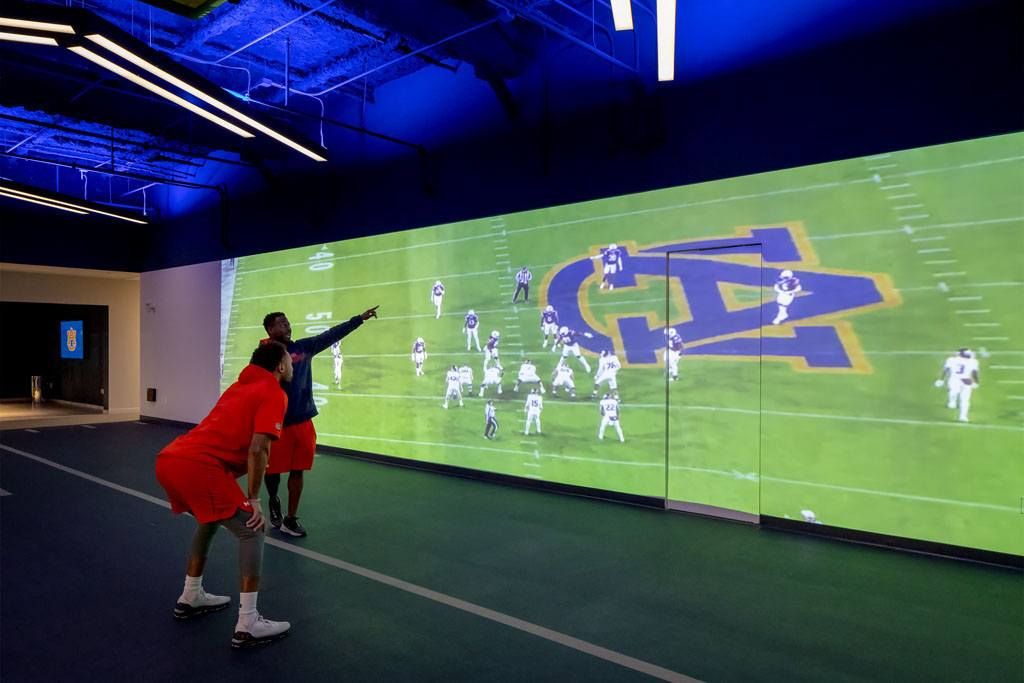You want more? College sports facilities are delivering. Today’s venues offer a host of new options to benefit fans, student-athletes and universities’ bottom lines. In this article, HOK Design Principal Peter Broeder outlines three ways college sports facilities are evolving to keep pace with new generations of users.

The Shamrock Zone at Kansas State University transformed the football stadium’s underused south concourse into a dynamic, fan-centric space.
1. Enhanced Fan Experiences
The college gameday experience is evolving rapidly. Today’s fans want more ways to view the game, socialize and soak up the atmosphere. Universities are responding by outfitting their sporting venues with new and better seating options and food and beverage choices. Spanning a variety of price points, these options give fans new and exciting ways to take in a game with each visit. This is particularly important for drawing younger generations of fans who are as interested in the social aspect of the game as they are the on-field (or court) action.
Recent HOK renovations to the University of Wisconsin’s Camp Randall Stadium, (top image) Kansas State University’s Bill Snyder Family Stadium (above image) and Southern Methodist University’s Gerald J. Ford Stadium are good examples of this evolution in venue offerings. All three projects took advantage of underutilized end-zone spaces to create new choices for viewing the game and socializing, new premium food and beverage offerings, and new event spaces for use throughout the year.
These reworked spaces not only provide fans with better options. They offer universities and their athletic departments more ways to monetize the facility on game day and beyond.

Notre Dame’s Campus Crossroads Project attached three new multipurpose buildings onto the school’s historic football stadium that bring daily activity to the facility. HOK served as a consultant to architect of record S/L/A/M Collaborative, providing design services for the sports, recreation and hospitality components of the project.
2. Multi-Purpose Programming and 365/7 Activation
Just as college sports fans are expecting more from their venues, so too are campus administrators who want their marquee campus buildings to perform throughout year. Today’s stadiums and arenas are staying active in the off season by hosting events, student classes and athletic department operations. Two HOK projects offer examples of this trend.
The University of Notre Dame’s Campus Crossroads Project (above image) transformed the school’s legendary football stadium into a year-round hub for academics, sports and student life. In addition to bringing updated amenities to the 80,000-seat Notre Dame Stadium, the project added three attached buildings to the facility. These buildings (comprising 800,000 square feet) house new classrooms, labs, a student center, fitness center, a media center, performance space and meeting, event and hospitality space—ensuring this part of campus is active for more than just seven Saturdays a year.
At Auburn University, work is underway to add flexibility, expand uses and generate new revenue streams at the school’s Jordan-Hare Stadium. The North End Zone Multi-Use Facility project will convert the stadium’s north end zone into a mixed-use space. In addition to adding premium fan amenities, the project will incorporate versatile conference spaces, new retail venues, student activity spaces and meeting rooms into the stadium. Importantly, the project also includes unfinished shell space that will allow the university to add future programming to the building as needs arise.

An interactive film room at Auburn University’s Woltosz Football Performance Center.
3. Pro-Level Training Facilities
In terms of physical power and skill, today’s student athletes are closer to professional athletes than ever before. In fact, with the addition of NIL funding, it could be argued that many of today’s college athletes are professional athletes. They’re paid to play, and they want athletic facilities that can help them reach the next level.
Advanced training centers can help them achieve their goals, and many universities are stepping up with practice and performance facilities that rival those in the pros. Beyond just helping athletes and teams succeed, these training spaces—where student athletes spend the balance of their time—can also serve as powerful recruiting tools in today’s topsy-turvy world of NIL, revenue sharing and transfer portals.
HOK-designed training facilities at Auburn University (above image), the University of Georgia and Miami University showcase the evolution of athletic performance centers. These dedicated facilities can include everything the student athlete needs throughout the day, from training and study areas to dining, recovery, leisure and social spaces. Some, like Clemson University’s Allen N. Reeves Football Operations Complex, include unexpected touches, such as putt-putt golf and a game lounge, to help players unwind and bond.
The Takeaway
College athletics is changing fast. From shifting fan expectations to new funding and operating models, the game looks very different than it did a decade ago. Sports facilities are adapting in step: delivering richer fan experiences, maximizing flexibility and use, and equipping athletes with pro-level training environments. The result? Venues that don’t just keep pace with change; they set the bar for what’s next.
Want to know more? Reach out to Peter Broeder.